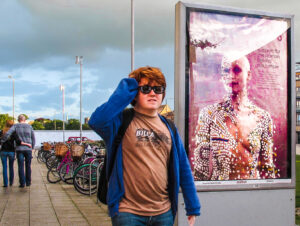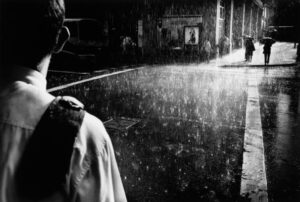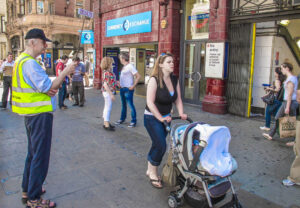I gave an introductory talk about street photography on Monday (12th February). I structured this under three headings: 1. Why street photography? 2. The development of the genre (early years; the 20th Century; and contemporary work). 3. Tips on technique.
The ‘why’ section defined street photography as pictures of people and everyday life in streets and public places and spaces. It is related to, but not the same as, social documentary photography. I argued that, in so far as street photography can be an intrusion into peoples’ privacy, it is important to have a rationale for it in a way that is not necessary for landscape photography, say. Its purposes include: recording and bearing witness to street life; the creation of an historical archive; and providing revelation and understanding by holding up a mirror to the kind of complex and ambiguous society we are making.
The early years, where the practice was constrained by technical limitations, e.g. the need for long exposures, were illustrated by work ranging from Louis Daguerre (1838)* through John Thompson (1873-74) to Jacques-Henri Lartigue (1911). The 20th Century saw street photography liberated by technical advances and the growing creative use of the medium in communicating ideas, as seen in the work of photographers like Henri Cartier-Bresson (1959), Tony Ray-Jones, (1967) and Martin Parr (1983-85). Work by photographers such as Trent Parke (1998), Polly Braden (2007) and Harry Gruyaert (2012) represented contemporary approaches. (* Dates refer to the date of specific work shown in the presentation.)
The section on technique included a few technical suggestions: use a small camera; choose wide angle lens, say 35mm (avoid telephotos); set a high ISO rating – 400 plus; use fast shutter speeds – 1/100sec or shorter – and small aperture – say f8. Ideally this enables the photographer to work fast, including shooting from the hip. Finding subjects and getting the picture can depend on patience, luck, serendipity and having the confidence to get in close. Ways of increasing the chance of success include: walking the streets and looking out for subjects; choosing a busy location where the evolving drama of street life presents a changing set of characters; looking for locations where fixed subjects, like adverts and shop windows, provide backdrops for changing juxtapositions; and visiting fairs and events where people relax their guards and are focussed on what’s going on around them. Two words of advice: avoid children; and if challenged explain what you are doing and don’t get into an argument.



